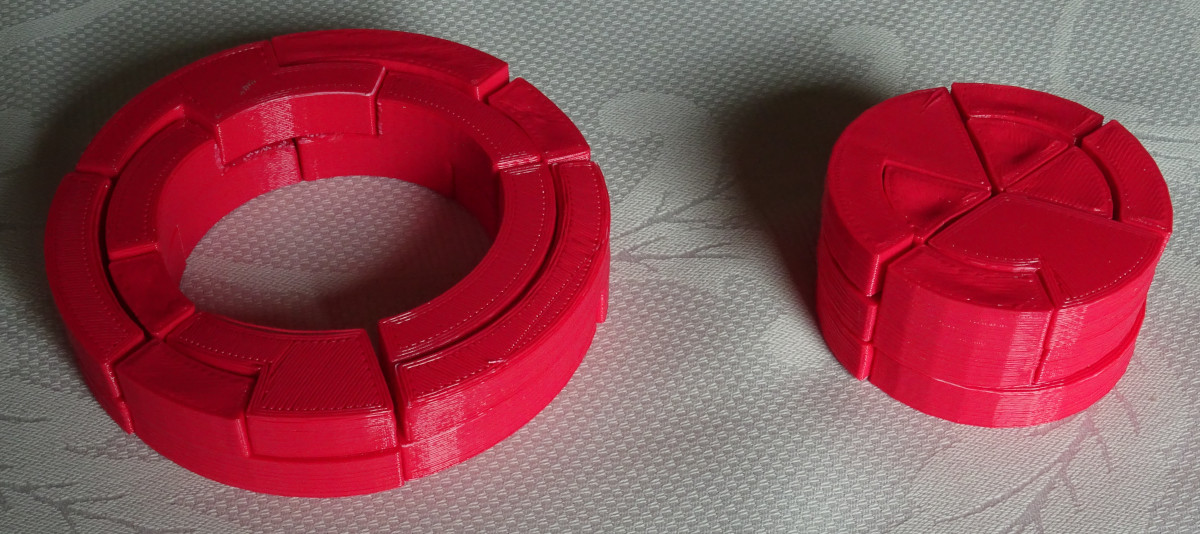Polysectors

2022/05/17
Take two solid circular rings, which are concentric and touching. Instead of the inner ring a solid circle
can also be chosen. Sectors of these rings with fixed center angle can be joined at their common arc faces, at their top and bottom faces or at their radial faces. This way you get polysectors. If we count the number of possible pieces made from n sectors, we assume that the center angle of the sectors is less or equal 360°/n.
Special pieces, which only contain sectors of one ring, are called single ring pieces. Other pieces, which consists of the complete inner ring and a few sectors of the outer ring look like a wheel with notches and are called notched wheels.

Let m be the number of sectors of a complete ring and n be the number of sectors the pieces are made from. Then the set of these pieces is like the set of polycubes of order n with the following restrictions:
- no turns around the y- or z-axis
- only 180° turns around the x-axis
- width in x-direction is less or equal 2
- width in y-direction is less or equal m
The set of single ring pieces is like the set on polyominoes of order n with the following restrictions:
- only one-sided pieces
- only 180° turns are allowed
For constructions there are some differences, because the cylindric surface of the cylinder has no left and right borders like the corresponding rectangle in case of the polyominoes. The same applies for double rings and polycube boxes.
For the single ring pieces and the double ring pieces we have the following counts. Click the numbers to see some constructions. In some cases the sets of single ring pieces are extended by notched wheels to get double ring constructions.
| |
Single Ring Pieces |
Double Ring Pieces |
| Sectors per Piece |
Pieces |
Total Number of Sectors |
Pieces |
Total Number of Sectors |
| 3 |
4 |
12 |
12 |
36 |
| 4 |
13 |
52 |
54 |
216 |
| 5 |
35 |
175 |
214 |
1070 |
| 6 |
120 |
720 |
1032 |
6192 |

Home


